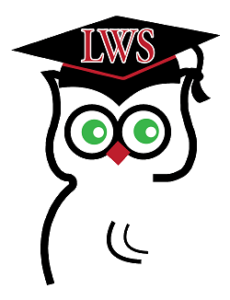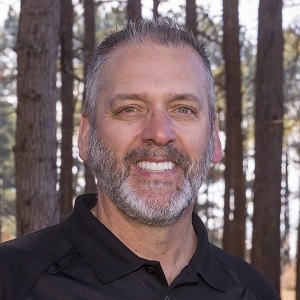The Schools Reviving Shop Class Offer a Hedge Against the AI Future
A Paper by Te-Ping Chen

This article was originally published in the Wall Street Journal on March 1, 2025.
In America’s most surprising cutting-edge classes, students pursue hand-on work with wood, metals, and machinery, getting a jump on lucrative old-school careers.
School districts around the U.S. are spending tens of millions of dollars to expand and revamp high-school shop classes for the 21st century. They are betting on the future of manual skills overlooked in the digital age, offering vocational-education classes that school officials say give students a broader view of career prospects with or without college.
With higher-education costs soaring and white-collar workers under threat by generative AI, the timing couldn’t be better.
In a suburb of Madison, Wis., Middleton High School completed a $90 million campus overhaul in 2022 that included new technical-education facilities. The school’s shop classes, for years tucked away in a back corridor, are now on display. Fishbowl-style glass walls show off the new manufacturing lab, equipped with computer-controlled machine tools and robotic arms.
Interest in the classes is high. About a quarter of the school’s 2,300 students signed up for at least one of the courses in construction, manufacturing, and woodworking at Middleton High, one of Wisconsin’s highest-rated campuses for academics.
“We want kids going to college to feel these courses fit on their transcripts along with AP and honors,” said Quincy Millerjohn, a former English teacher who is a welding instructor at the school. He shows his students local union pay scales for ironworkers, steamfitters and boilermakers, careers that can pay anywhere from $41 to $52 an hour.
“Kids can see these aren’t knuckle-dragging jobs,” Millerjohn said.
Welding teacher Quincy Millerjohn in one of the campus shops at Middleton High School in Middleton, Wis.
In Wisconsin, 32,000 high-school students took classes in architecture and construction during the 2022-2023 school year, a 10% increase over the prior year, state data show: 36,000 enrolled in manufacturing courses, a 13% increase over the same period.
“There’s a paradigm shift happening,” said Jake Mihm, an education consultant in the Wisconsin Department of Public Instruction. “They’re high-skill, high-wage jobs that are attractive to people because they’re hands-on, and heads-on.”
Renewed interest among local governments, school districts, businesses and voters has triggered the investment in shop classes, which for decades have lost enrollment, pushed aside by demand for college-prep courses. Ohio and other states offer schools financial incentives for classes that lead to industry certifications in such high-demand jobs as pharmaceutical technician and pipe fitter.
At Middleton High, wood shop teacher Justin Zander added classes to accommodate the 175 students who enroll each semester, up 75 from four years ago. He said he still had to turn away students.
Zander, who has taught shop classes for three decades, said students and parents better understand that blue-collar work can pay well. “People are more accepting now,” he said.
‘Good choice’
American high schools began jettisoning shop class following the 1983 publication of “A Nation at Risk,” a federal report that urged high schools to raise academic standards.
The 2002 No Child Left Behind Act emphasized standardized test results to measure student achievement. Many schools, under pressure to show academic improvement, spent less on art and music classes, as well as cut back on auto repair and other shop courses.
For decades, shop programs were dogged by allegations that schools shunted students from low-income families into blue-collar careers, while well-off students headed to college.
If there is a stigma to taking shop classes, Andres Mendoza Alcala, a Middleton High senior, isn’t seeing it. “I haven’t met a single person that looks down on someone else, just because they’re doing the trades instead of college,” the 18-year-old aspiring carpenter said. “They just say it’s a good choice. These are secure jobs.”
As white-collar hiring slows, more younger workers are finding blue-collar careers. The share of workers ages 20 to 24 in blue-collar jobs was 18% last May, two points higher than it was at the start of 2019, according to an analysis by payroll provider ADP. Enrollment in vocation-focused, two-year community colleges jumped 14% in fall 2024 compared with a year earlier. Enrollment at public four-year colleges rose 3% during that period.
Students participating in wood shop and home maintenance classes at Middleton High School.
Brandon Ross at PBK, an architecture firm based in Houston, sees the boom firsthand. School construction projects tied to vocational education account for around 10% of the firm’s work, he said, a figure that has doubled in the past five years.
PBK is designing a $140 million career and technical-education center for students in the Spring Branch Independent School District, which serves the Houston area. There will be an auto-repair shop, which hasn’t been available at district schools for years, as well as courses in fields as varied as healthcare, digital animation, filmmaking, culinary arts, cosmetology, and computer networking.
“Not everybody wants to go to college, and some people don’t want to go to college right away,” said Jennifer Blaine, the district superintendent. Enrollment in vocational classes is up 9% over the past four years, she said. The project, supported by a voter-approved bond issue, will accommodate 2,200 students each semester when completed.
About 150 students at Sutherlin High School in Sutherlin, Ore., take Josh Gary’s woodworking class, a number equal to nearly half the student body. When Gary took over the shop class in 2014, he had 30 students and little equipment. He bought used tools on Craigslist with his own money and raised funds selling picnic tables he made with students.
The wood shop now features laser cutters and computer-assisted routers that enable high-level detail work. Last year, Sutherlin High opened a $750,000 metal shop. A $375,000 state grant paid for new tools, and $50,000 from Harbor Freight Tools for Schools, a program launched by the tool-retailer’s founder, bought a pickup truck for use by the classes.
Gary likes to joke that he is a shop teacher who never took shop. When he was in high school during the late 1990s, he said, his father wouldn’t let him enroll. He went to college and law school but decided to teach.
“The trades are just more valued these days,” said Gary, noting that class valedictorians have taken his classes. “Electricians and plumbers make great money, and some of our higher-end students see that.”
Teacher Justin Zander’s wood shop at Middletown High School.
A welding student working at Middleton High School.
Test drive
Roughly half of college graduates end up in jobs where degrees aren’t needed, according to a 2024 analysis of more than 10 million résumés by labor analytics firm Burning Glass Institute and the nonprofit Strada Education Foundation.
Yet many high schools aren’t equipped to help students who want to skip college. One hurdle is cost. Vocational education is generally more expensive than math or English classes. Shop teachers at Middleton High spend around $20,000 a year on wood, steel, aluminum, and other materials. Updating equipment for manufacturing, woodworking and metalworking cost the district $600,000.
Recruiting shop teachers is tough, given the generous wages paid for skilled trade work.
For 22 years, Staci Sievert taught social studies at Seymour Community High School in Seymour, Wis. After the school went through three shop teachers in four years, Sievert told the principal she would learn to weld, work with wood, and teach the classes herself. She became a shop teacher in 2017.
“I just felt like we were shortchanging our kids, our community and our families if we weren’t raising the bar in tech ed,” Sievert said. In her region of northeast Wisconsin, more than a fifth of the jobs are in manufacturing. “This is who we are,” she said.
For some students, shop classes are a steppingstone, not a replacement for higher education.
Shop teacher Staci Sievert at Seymour Community High School.
While Breana Brackett was an honors student at Highland High School in Bakersfield, Calif., she took a construction class at the district’s Regional Occupational Center. She is now at California State University, Chico, working toward a degree in construction management.
The course she took in high school, Brackett said, “helped me be sure this is what I wanted to do before I spent money to go to college.”
Kern High School District, which encompasses Bakersfield, spent $100 million from a voter-approved bond measure and state grants to build a new vocational center in 2020 and expand its Regional Occupational Center. The two campuses are open to high-school juniors and seniors to take classes, some for-college credit. Roughly, 70% of the students who take courses there continue their education after high school, mostly at community college or trade schools, said Natasha Hughes, who recruits students for the district programs.
A teenager can make $20 an hour as a welder’s helper after graduating from high school with technical-education classes, Hughes said. Another year of welding instruction at a community college can boost pay to $60,000 a year for pipeline jobs in Bakersfield-area oil fields.
Even with the expansion of the district’s vocational classes, student demand outpaces available seats. Last school year, 6,200 students applied for 2,500 spots at the two vocational campuses. The waitlist for auto shop is 300 students, said Fernando Castro, one of the instructors.
Castro took a $50,000 pay cut when he left his job as an automotive technician in 2015. He said he was inspired by his mother, also a teacher. The district has since adjusted its salary formula to reflect industry experience. Castro now makes $100,000 a year, matching his former income.
“It’s the best job I’ve ever had,” he said, helping launch young adults into well-paying careers and having his summers free.
Tom Moser, service manager at Jim Burke Ford Lincoln, said the Bakersfield car dealership employs around two dozen graduates from the school district’s Regional Occupational Center, including two people he hired out of high school last year.
Experienced employees have been hard to find. “You’ll post a job and not get a qualified applicant in months,” Moser said. The dealership decided it was better to train workers who graduated from high-school shop classes. Workers who start at $19 an hour can work their way up to six-figure incomes in four years, he said.
“You can pretty much write your own ticket once you’ve acquired the skills,” Moser said.
Some students taking the district’s vocational courses learn they aren’t cut out for hands-on work. A number of students who sign up for Chad Wright’s early morning construction courses quit every year, he said. Some aren’t happy about having to rise as early as 5:30 a.m. to catch the bus for class. Others are surprised by how much endurance the course requires.
“Once they get in here and realize it’s three hours of actual standing up doing some work,” Wright said, “some of them get a little glassy-eyed and wonder what they signed up for.”
Yet, it is best to learn early about the rigors of the construction trades, he said, especially when early mornings are the best time to work during the hot summers in this part of California.
“I’m not trying to run anybody off,” Wright said. “But at the same time, I want them to understand what the real world has waiting.”





